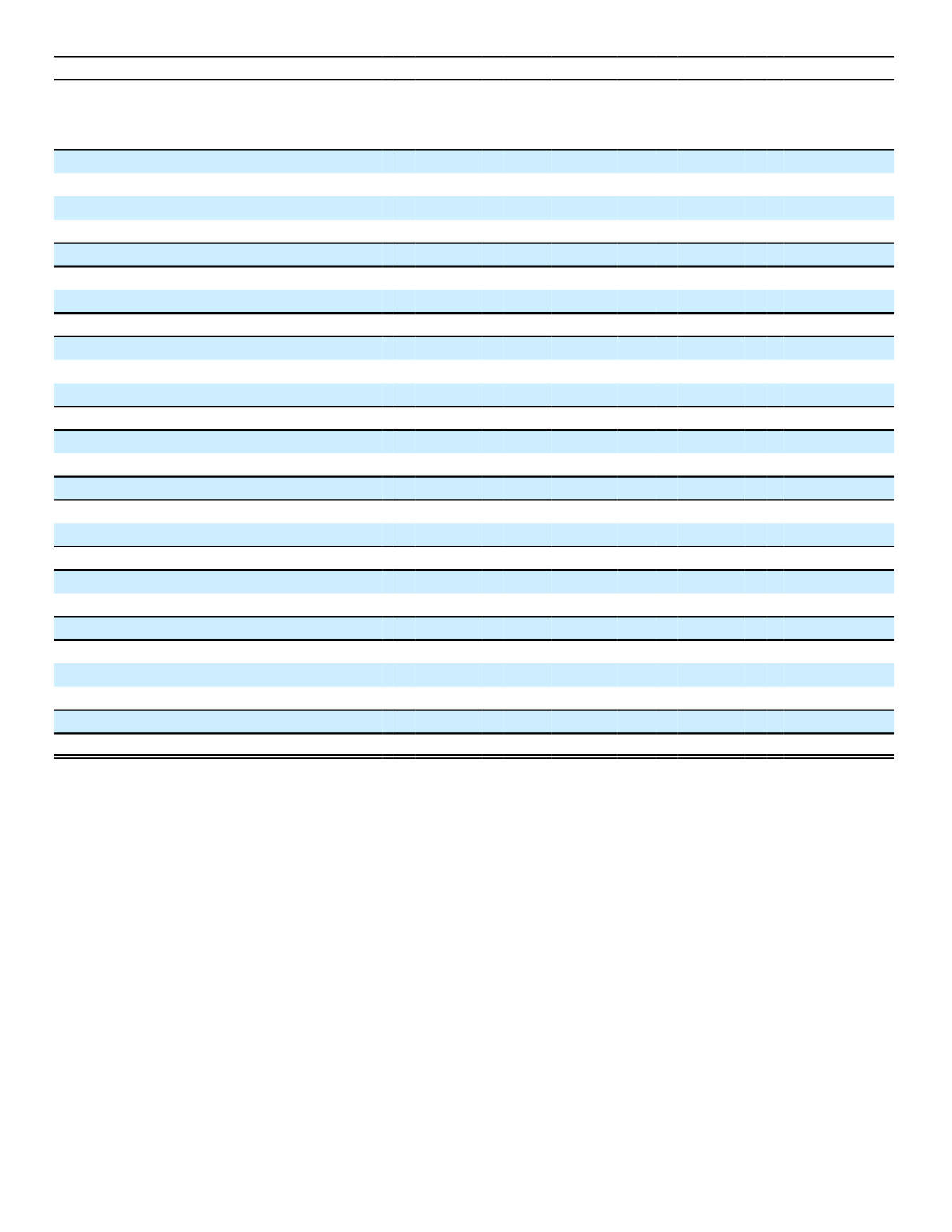

2015
(In millions)
Quoted Prices in
Active Markets
for Identical
Assets
(Level 1)
Significant
Observable
Inputs
(Level 2)
Significant
Unobservable
Inputs
(Level 3)
Total
Fair
Value
Securities held to maturity, carried at amortized cost:
Fixed maturities:
Government and agencies:
Third party pricing vendor
$ 23,391
$
0
$
0
$ 23,391
Total government and agencies
23,391
0
0
23,391
Municipalities:
Third party pricing vendor
0
415
0
415
Total municipalities
0
415
0
415
Mortgage- and asset-backed securities:
Third party pricing vendor
0
12
0
12
Broker/other
0
0
26
26
Total mortgage- and asset-backed securities
0
12
26
38
Public utilities:
Third party pricing vendor
0
3,203
0
3,203
Total public utilities
0
3,203
0
3,203
Sovereign and supranational:
Third party pricing vendor
0
2,711
0
2,711
Total sovereign and supranational
0
2,711
0
2,711
Banks/financial institutions:
Third party pricing vendor
0
4,546
0
4,546
Total banks/financial institutions
0
4,546
0
4,546
Other corporate:
Third party pricing vendor
0
3,189
0
3,189
Broker/other
0
27
0
27
Total other corporate
0
3,216
0
3,216
Total securities held to maturity
$ 23,391
$ 14,103
$
26
$ 37,520
The following is a discussion of the determination of fair value of our remaining financial instruments.
Derivatives
We use derivative instruments to manage the risk associated with certain assets. However, the derivative instrument
may not be classified in the same fair value hierarchy level as the associated asset. Inputs used to value derivatives
include, but are not limited to, interest rates, credit spreads, foreign currency forward and spot rates, and interest volatility.
The fair values of the foreign currency forwards, options, and interest rate swaptions associated with certain
investments; the foreign currency forwards and options used to hedge foreign exchange risk from our net investment in
Aflac Japan and economically hedge certain portions of forecasted cash flows denominated in yen; and the foreign
currency swaps associated with certain senior notes and our subordinated debentures are based on the amounts we
would expect to receive or pay. The determination of the fair value of these derivatives is based on observable market
inputs, therefore they are classified as Level 2.
For derivatives associated with VIEs where we are the primary beneficiary, we are not the direct counterparty to the
swap contracts. As a result, the fair value measurements incorporate the credit risk of the collateral associated with the
VIE. We receive valuations from a third party pricing vendor for these derivatives. Based on an analysis of these
derivatives and a review of the methodology employed by the pricing vendor, we determined that due to the long duration
of these swaps and the need to extrapolate from short-term observable data to derive and measure long-term inputs,
certain inputs, assumptions and judgments are required to value future cash flows that cannot be corroborated by current
130


















